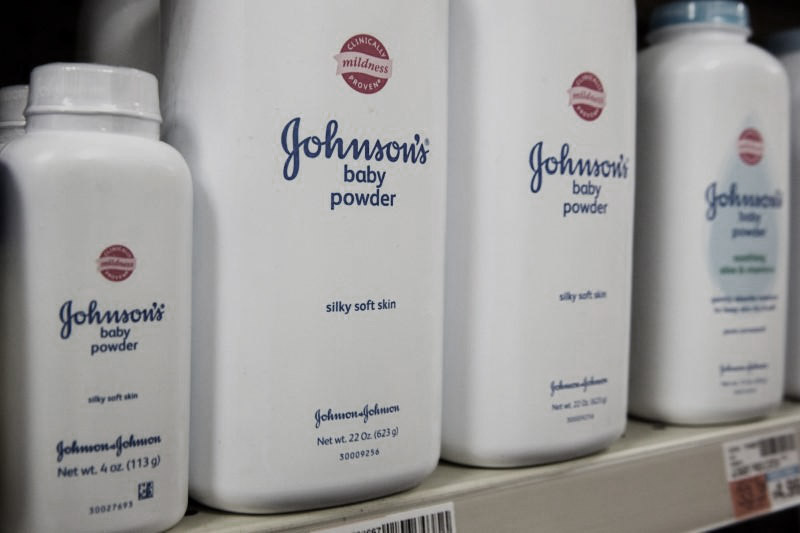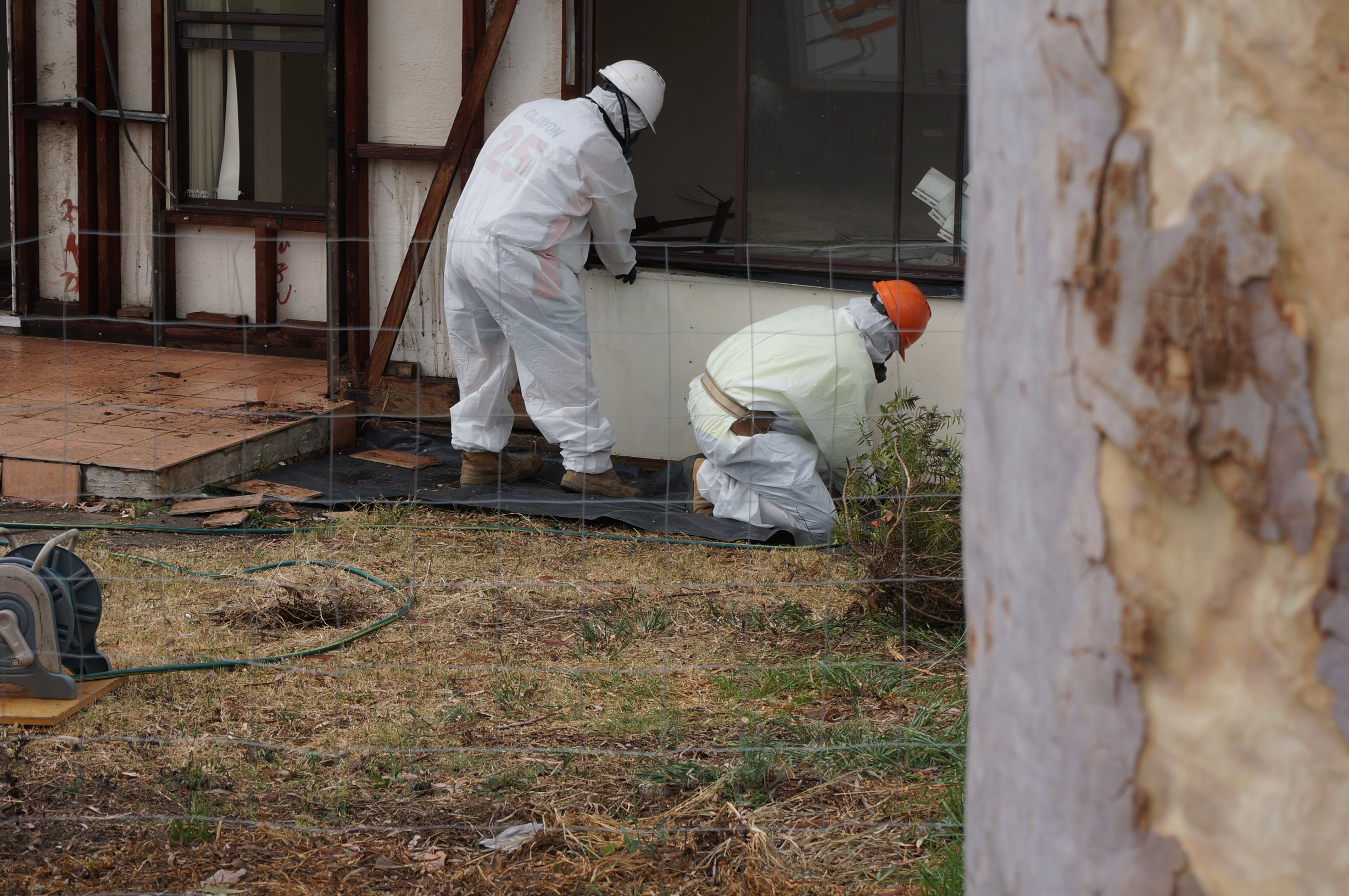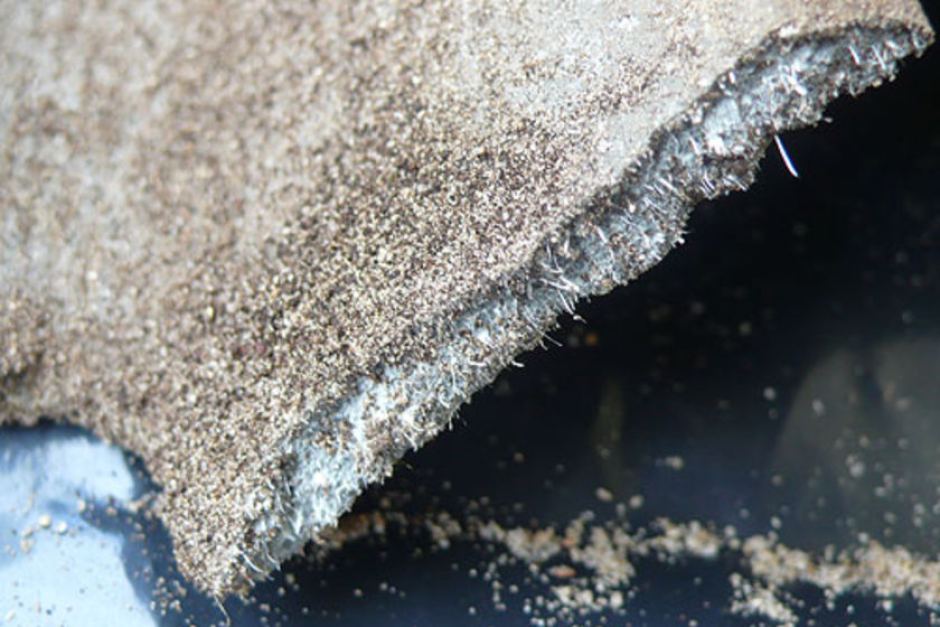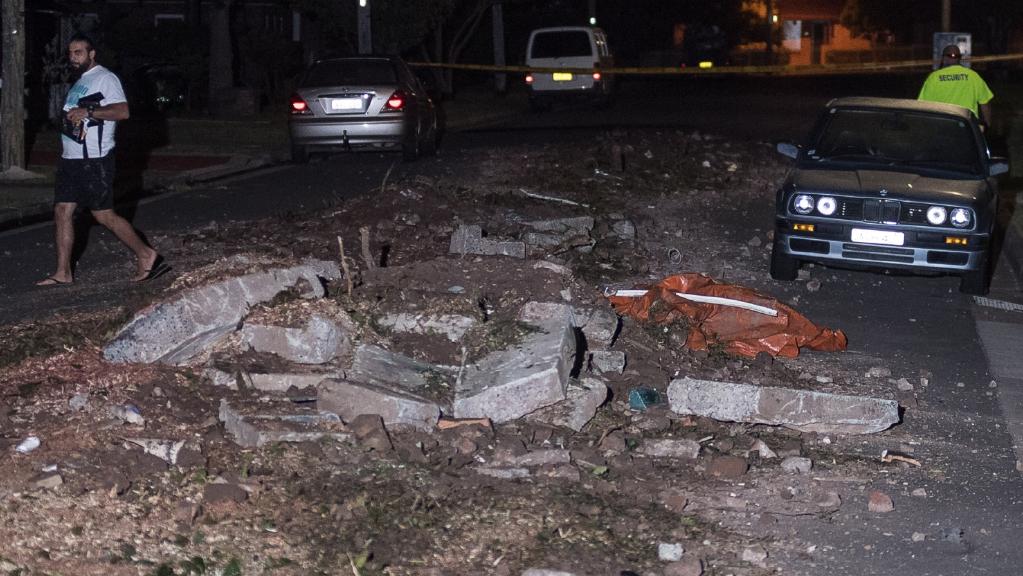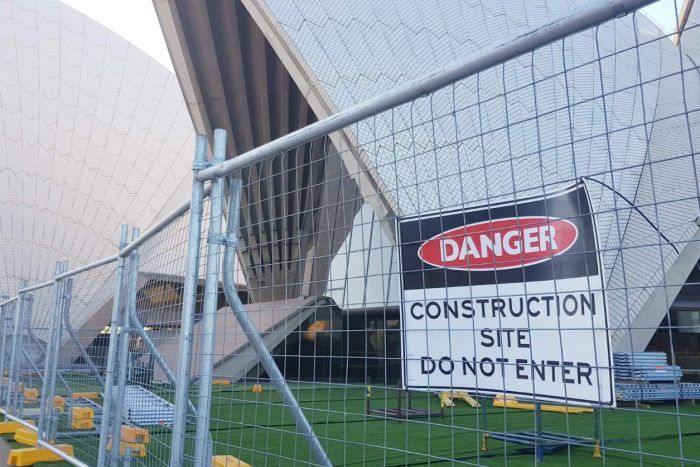Popcorn ceilings were once a popular choice for home interiors but have since fallen out of fashion due to their outdated appearance and potential health hazards. Removing them can be a daunting task, but with the right tools and techniques, it can be done safely and effectively. Follow this step-by-step guide to transform your home into a modern and safer living space.
Read moreThe Ins and Outs of Black Mastic: Everything You Need to Know
If you're planning to use black mastic for tiling or flooring, it's important to take safety measures. Asbestos might be present in it, which can be dangerous if you inhale it. Make sure to follow proper safety guidelines and precautions
Read moreJohnson And Johnson Looses Asbestos Lawsuit.
A New Jersey court has ordered pharmaceutical and manufacturing giant Johnson & Johnson to pay $37 million in compensatory damages and a further $80 million in punitive damages, to plaintiff Stephen Lanzo III and his wife.
Mr Lanzo claims he developed mesothelioma, a disease caused by inhaled asbestos fibres reaching the lung’s pleural coverings, from using Johnson & Johnson products he used between 1972 to 2003.
The products he says are responsible - Johnson & Johnson’s Shower to Shower and Johnson & Johnson's Baby Powder - both contain talc.
Talc is a naturally occurring grey mineral made of hydrated magnesium silicate that generally forms near or beside asbestos deposits. It is a common ingredient in personal care products like baby powder and make-up and this Johnson & Johnson case is not the first time asbestos has been found in talc used in consumer grade products.
Predictably, Johnson & Johnson have denied claims that their talc based products contain any asbestos fibres, with their lawyer even going as far as to suggest that Mr Lanzo could have been exposed to asbestos through the pipes in his childhood home. However, the jury did not agree with this hypothesis and ruled to award the plaintiff with damages after just one day of the trial.
If Johnson & Johnson’s denial tactics sound oddly familiar, that's because they, unfortunately, are. As we saw in the case of fashion accessory chain Claire’s, which we previously covered, it is common for companies accused of selling products contaminated with asbestos fibres to fiercely deny such claims, even in the face of compelling evidence.
Fortunately, it seems these denial tactics employed by companies like Johnson & Johnson and Claire’s aren’t working long term, with Johnson & Johnson currently facing over 6,600 more lawsuits related to its talc based products.
Make-up products sold by fashion accessory chain Claire's have been found to contain asbestos
In Australia, asbestos has been banned since 2003; however, it is a different story over in the United States, where the Johnson & Johnson case took place.
Troublingly, there are currently no federal regulations in the US that requiring that talc used in consumer grade products, such as baby powder or make-up, is asbestos free and the FDA (Food and Drug Administration) can only take action if there is sound evidence that shows that such products are harmful.
Although, as Australia’s legacy problems with asbestos show, banning asbestos may not be a catch-all solution, it is an essential starting point to an asbestos free future.
Related Articles
More Asbestos Woes For Fashion Accessory Chain 'Claire's.
Two months ago we shared the news that lab tests conducted by the Scientific Analytical Institute had found traces of deadly asbestos in 17 make-up products sold by fashion accessory chain Claire’s.
Asbestos has been found in more products sold at Claire's stores.
After pulling nine of its make-up products, Claire’s had private lab testing done that showed the products were asbestos free. The fashion accessory chain then issued statements denying claims that their products ever contained asbestos; however, a new wave of lab reports has found this claim to be false.
The tests, carried out on behalf of consumer interest group US.PIRG, found an additional three makeup products sold at Claire’s stores tested positive for deadly asbestos fibres.
Claire’s has denied these claims made by US.PIRG, citing its previous lab results and criticising the research methods undertaken by US.PIRG.
The outlook is equally grim for Claire’s stores in the UK, where the chain has been ordered to destroy two of its make-up products: the highly popular eye shadow and face blusher kits.
The face blusher kit is just one of the products sold at Claire's UK chains that was found to contain asbestos.
This order from the UK government comes after Dutch authorities found asbestos in the two Claire’s products. These findings were then confirmed by officials in Brussels which lead to a Europe-wide alert being placed on the products.
Much like how it played out in the US, Claire’s is predictably claiming that their products are safe and asbestos free, as well as refusing to release how long the asbestos contaminated products were sold for.
The presence of asbestos in Claire’s make-up is particularly troubling for two reasons:
- Since it is warn on the face there is a very high change of asbestos fibres being inhaled through the nose or mouth.
- Claire’s make-up is marketed to and predominately warn by teenage girls.
The asbestos fibres were believed to be introduced to the make-up through talc, a common make-up ingredient that is used to absorb moisture and give the product a smooth feel on the skin.
Related Articles
How Much Will It Cost To Remove Asbestos From My Home?
Asbestos is a silent menace lurking in many Australian homes. If your house was built or renovated between 1920 and 1990 there is a good chance it contains asbestos in one form or another. Sometimes hidden, sometimes in plain site, asbestos products may look harmless but if disturbed they release deadly fibres that can lead to serious health problems such as mesothelioma, lung cancers, cancer of the larynx and even ovarian cancer.
Asbestos is at the greatest risk of being disturbed during renovation or demolition and if your are considering undertaking such works then it is important asbestos is removed and disposed of by trained professionals.
Our asbestos removal crew removing asbestos sheeting from a asbestos clad fibro home.
Sure, I understand the dangers asbestos poses but how much will it cost to get it out of my house?
This is where things get a little bit complicated. A variety of factors, such as the type of asbestos present, the amount of asbestos present and the location of the asbestos present all affect the amount of time taken, and therefore the cost, of removing asbestos.
Asbestos can be found in a variety of locations around the home, such as underneath vinyl or linoleum flooring, in fibre cement products and in insulation products - just to name a few. In some cases soil may be also be contaminated with asbestos, usually in the form of chunks of asbestos sheeting.
As a general rule, asbestos products come in two forms: non- friable and friable (commonly known as 'Mr. Fluffy'). Non-friable asbestos is cheaper to remove as the dangerous asbestos fibres are incased - in cement or other material- and therefore less likely to become airborne. This in turn means less safety precautions and time are required to safely remove non-friable asbestos products.
Asbestos sheeting can easily be recognised by the wafflle patern on its underside.
However, removing non-friable asbestos is still time consuming and tedious, as each piece of product containing the dangerous fibres must be removed individually by hand, wrapped in plastic film and placed in a dumpster.
Some non-friable asbestos products like fibro sheeting can be particularly time-consuming to remove, especially if it is covered by a brick facade.
The final factor to consider is the cost of legal disposal of asbestos, which costs roughly $330 per tonne to dispose of. Obviously this means the more asbestos is present in your house, the more it will cost to safety and legally dispose of it.
Related Articles
Asbestos Found In Make-Up Products
As we've previously discussed on this blog, before the health risks of exposure to asbestos were known (and in many cases even after), the mineral was widely used in everything from building materials to roof insulation to break pads to sand pit filler... and now apparently, even make-up.
A lab in North Carolina, USA, recently found trace amounts of tremolite asbestos in a Claire’s (A chain of accessory stores) make-up product aimed at young girls. Although never used commercially, tremolite asbestos is often found in talc, a key component in many make-up products.
Make up; not the first place you would expect to find asbestos...
The tremolite was discovered when a local mother decided to send a sample of her daughter’s make-up into a local lab to see what was in it. What was meant to be a fun indulgence of curiosity took a dark turn when the results showed asbestos was present in the make-up.
Claire's initially pulled nine of its cosmetic products as a precautionary measure; however, after conducting its own testing with two different labs, Claire’s has released a statement refuting the claim their make-up products ever contained traces of the deadly mineral.
The statement issued by Claire’s said “We are pleased to report that test results received to date from two certified independent labs confirm that the products in question are asbestos free, completely safe and meet all government requirements”
A spokesman for Claire’s also added “Any report that suggests that the products are not safe is totally false”.
Accessory chain-store Claire's was forced to re-call nine make up products after reports came out that they contained traces of tremolite asbestos.
Despite Claire’s claims, the lab that conducted the initial testing that found the asbestos is standing by their results, asserting that asbestos was found in a variety of Claire’s make-up products and questioning the validity of the tests conducted by Claire's.
This isn’t the first time asbestos has been allegedly found in make-up. Mid last year American chain store, Justice, stopped selling its ‘Shine Shimmer Powder’ after an investigation revealed it contained asbestos.
Given that asbestos can lead to serious health problems, the presence of the mineral in make-up products is particularly concerning. Here is hoping this latest incident is the last time the mineral is found in cosmetics products.
Related Articles
Audit Reveals A Majority Of Australian Schools Contain Asbestos
Although the use, manufacture and importing of asbestos and asbestos based products has been banned in Australia since 2003, our nation's past enthusiasm for the dangerous mineral continues to haunt us to this day. The repercussions of Australia's previous wide-ranging and liberal use of asbestos can be felt both in our high rates of mesothelioma and our legacy of buildings containing the deadly mineral.
Asbestos can still be found lurking in the family home (mainly those built or renovated before 1980), in iconic buildings such as the Sydney Opera House, and most troublingly, in Australia's public schools.
A recent audit has found that a majority of Australia's schools contain asbestos based products. In Victoria for example, out of the 1,712 schools inspected, only 39 were found to be free of the dangerous mineral.
In New South Wales it was a similar story; asbestos was present in hundreds of schools in Northern NSW, mainly in the form of roof tiles, roof sheeting and external window panels.
These findings are concerning as all forms of asbestos pose a serious risk to human health. Inhaling the substance is linked to cancers such as mesothelioma, lung cancer, cancer of the larynx and even ovarian cancer.
Obviously, individuals of any age are vulnerable to the side-effects of asbestos exposure; however, children are particularly at risk for a couple of different reasons:
- Children breathe in more rapidly than adults as their lungs are still developing. This means they are more likely to breathe in any deadly asbestos fibres that are present in the air.
- Due to the delayed onset of most cancers caused by asbestos - particularly mesothelioma which can take 30 years for symptoms to develop - asbestos poses a greater risk to a child's life expectancy than to an adult's. Children are estimated to be 3.5 times more likely to develop mesothelioma than adults.
- Children are at a higher likelihood of asbestos exposure because of their active play habits that could disturb or damage asbestos containing products.
If disturbed, asbestos fibres can become airborne and are easily inhaled.
In order to reduce the likelihood of students and staff being exposed to asbestos, all Australian state governments require schools containing asbestos to have an asbestos management plan in place. This plan must be in line with the 2011 Federal Work, Health and Safety Act and involves any area found to be contaminated with asbestos being fenced off.
In response to the high amount of schools containing asbestos, the Victorian government has pledged $155 million towards removing asbestos from its state schools with the ambitious goal of making all state schools asbestos-free by 2020. This involves both the removal of asbestos where possible and the demolition of buildings too contaminated with asbestos to simply have the substance removed.
Infographic outlining the Victorian Government's plan to rid schools of asbestos, courtesy of the Victorian Government School Building Authority.
The Victorian government's plan commenced in the first half of 2016 and prioritised 'high risk' buildings, which have all since been removed.
Here's hoping the rest of Australia's state governments follow suit soon so we can rid all our schools of this dangerous materal.
Related Content
Asbestos Contaminated Soil Illegally Dumped In Sydney's West.
Police are on the hunt for the culprit responsible for dumping 8 tonnes of asbestos contaminated materials on a suburban street in Chester Hill.
Residents of the Western Sydney suburb woke up Monday morning to find debris scattered all over the road after being illegally dumped at 1am that morning. The road was soon taped off by police as fire crews in hazmat gear began to sift through and clean up the dumped material, which consisted mostly of asbestos contaminated soil.
Asbestos contaminated waste dumped in the middle of the road in the Sydney suburb of Chester Hill.
Understandably the residents of the affected street were not happy about the illegal dumping, with one commentator going as far as calling the individuals responsible for dumping the material ‘potential murders’.
Sure, the phrasing might be a tad dramatic, but the links between asbestos and fatal health conditions like mesothelioma are well established, meaning that the dumped materials pose a serious health risk to the affected street’s residents.
Although it may not make the headlines, asbestos contaminated soil is sometimes found when undertaking demolition, excavation or construction works.
Most home owners are completely unaware that there could be unwanted asbestos buried underneath their house foundations or below their backyard. This is usually due to illegal and improper disposal of asbestos from past demolition, renovation or building works.
Regardless of how it got there, the result is the same: broken pieces of asbestos sheeting scattered throughout the soil. These pieces of asbestos sheeting are easily identified by the waffle-shaped pattern on their underside.
Asbestos fibre board often features a walfle pattern on its underside.
If asbestos contaminated soil is found on your property there are two main courses of action that can be taken:
- All the contaminated soil can be excavated and disposed off as asbestos contaminated waste. Although straightforward, this solution means that all the soil must be disposed of as asbestos waste, costing roughly $330 to dispose of per tonne.
- If the contamination is mainly surface level, an asbestos removal crew can be brought in to hand-pick the pieces of asbestos from the soil. Although tedious, this ensures less asbestos waste and therefore a lower disposal fee.
Asbestos hiding amongst the soil.
Both of these options require a trained asbestos removal crew and supervisor to undertake and supervise the asbestos removal works as well as a third party certifier to approve that the previously contaminated area is now free of asbestos.
Although alarming, by acting quickly and soliciting a professional asbestos removal company, asbestos contaminated soil can be throughly and safety removed.
Related Articles
Asbestos Mining Towns: Wittenoom, WA
Today, Australians are all too aware of the dangers of asbestos. A ban on the use, manufacture and importing of the substance has been in affect for close to 15 years and strict regulations control its removal and disposal. However, Australia hasn’t always been so savvy when it comes to asbestos and you don’t have to dig too deep into our nation’s past to uncover our now faded enthusiasm for the deadly mineral.
A prime example of this is the former Australian mining town of Wittenoom. Located in the Pilbara region of Western Australia, Wittenoom was once home to a booming asbestos mine, famous for its blue crocidolite asbestos.
Mining operations first began in the region in the 1930’s, although it wasn’t until 1943 that a blue asbestos mine was opened in Wittenoom Gorge. Fuelled by the increased demand for asbestos for gas masks and tanks for the war effort, the mine initially flourished, employing 7,000 men and women during its 26 years of operation. As well as those that worked for the mine, an estimated 13,000 people lived in the town and were in some way dependant on the revenue the mine created.
Although the health dangers of asbestos were somewhat known at this time, they were easy to disregard when it was asbestos putting food on the table and money in pockets. This dilemma, and the plight of Wittenoom in general, was the subject of the 1990 Midnight Oil album, Blue Sky Mine; its titular track featuring the lyrics ‘But if I work all day at the Blue Sky Mine there’ll be food on the table tonight’.
If you lived in Wittenoom, exposure to blue asbestos was inevitable. Piles of asbestos tailings were dumped in gorges and those that weren’t dumped were used in everything from roads, to pipelines, and even in children’s sandpits. It is believed that roughly 2000 former Wittenoom residents and mining workers have already died from asbestos related health problems.
Children playing in a 'sandpit' full of deadly blue asbestos tailings.
For this reason the town began to be scaled down in 1978 with residents being offered money to leave their homes. In 2007 Wittenoom was officially taken off the map and degazetted by the state government. Today it is largely a ghost town, with only three permanent residents who stay on despite government warnings.
Wittenoom remains a foul mark on Australia's history, a costly tragedy that can never be erased. Fortunately, today in Australia the health risks of asbestos are very well known and strict legal framework is in place to prevent its mining and use.
However, this is not the case all over the world, and countries like Russia still mine and use huge amounts of asbestos.
Join us next time when we take a look at another very different asbestos mining town. A town so in love with the substance it is named after it: the town of Asbest in Russia.
Related Articles
Dangerous Friable Asbestos Found In The Sydney Opera House
Like many other Australian buildings constructed in the 1950's, the iconic Sydney Opera House has been found to contain asbestos.
It was first reported back in August that asbestos fibres had been found in the building's wiringand that 25 workers were exposed to the carcinogenic material while working on a service duct. Last Thursday, more unexpected asbestos was detected while electricians were carrying out upgrades to the Opera House’s Joan Sutherland Theatre.
Samples of the substance were taken for testing on Thursday and confirmed to be friable asbestos on Friday. In response, the 35 electricians working on the Joan Sutherland Theatre refused to continue working due to the presence of the toxic substance.
Friable asbestos products, such as ‘Mr Fluffy’ were generally used as insulation. Not particularly common in Sydney, friable asbestos saw widespread use in colder parts of the country such as the outer suburbs of Canberra.
Also known as loose fill asbestos, friable asbestos is particularly hazardous. While other asbestos products are usually only dangerous if disturbed or removed incorrectly, fibres from friable asbestos easily become airborne with little provocation. Breathing in just a single asbestos fibre can lead to serious negative health effects like mesothelioma.
The side effects of asbestos exposure can take decades to emerge and this latest batch of workers exposed to the toxic substance won’t know for between 10 to 30 years if their exposure is fatal or not.
Although the company contracted to carry out the building upgrades, Laing O’Rourke, claims to have a comprehensive asbestos management plan in place, last week alone there were two unexpected asbestos finds, not including the workers exposed to asbestos back in August. Such asbestos finds pose a serious risk for workers carrying out the upgrades.
This high profile asbestos case is a harrowing reminder of the serious health risks posed by asbestos and how important it is that asbestos is removed carefully and by trained professionals.

